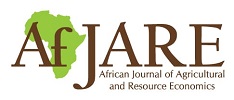Agricultural R&D investments and development goals in sub-Saharan Africa: Assessing prioritisation of value chains in Senegal
Rui Benfica
Abstract
We look at the prioritisation of agricultural value chains (VCs) for the allocation of R&D resources that maximise development outcomes (poverty, growth, jobs and diets) in Senegal. This study used (a) the rural investment and policy analysis (RIAPA) computable general equilibrium (CGE) model; (b) the perpetual inventory model (PIM), and (c) information on the elasticities of VC total factor productivity (TFP) with respect to R&D knowledge stocks (KS) to discuss the value chain priority allocations of R&D resources. The results indicate that no value chain is the most effective at improving all outcomes. The most effective value chains to be efficiently supported through R&D investments are traditional export crops, groundnuts, rice, poultry, sorghum/millet and cattle. Other promising value chains with potential effects at scale include vegetables, oilseeds and fruits. Future modelling needs to focus on deepening the standardisation and integration of R&D investments in this framework and bring together other factors and complementary agri-food system (AFS)
investment dimensions that are relevant to sustainable and inclusive agricultural growth.
